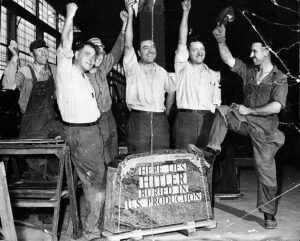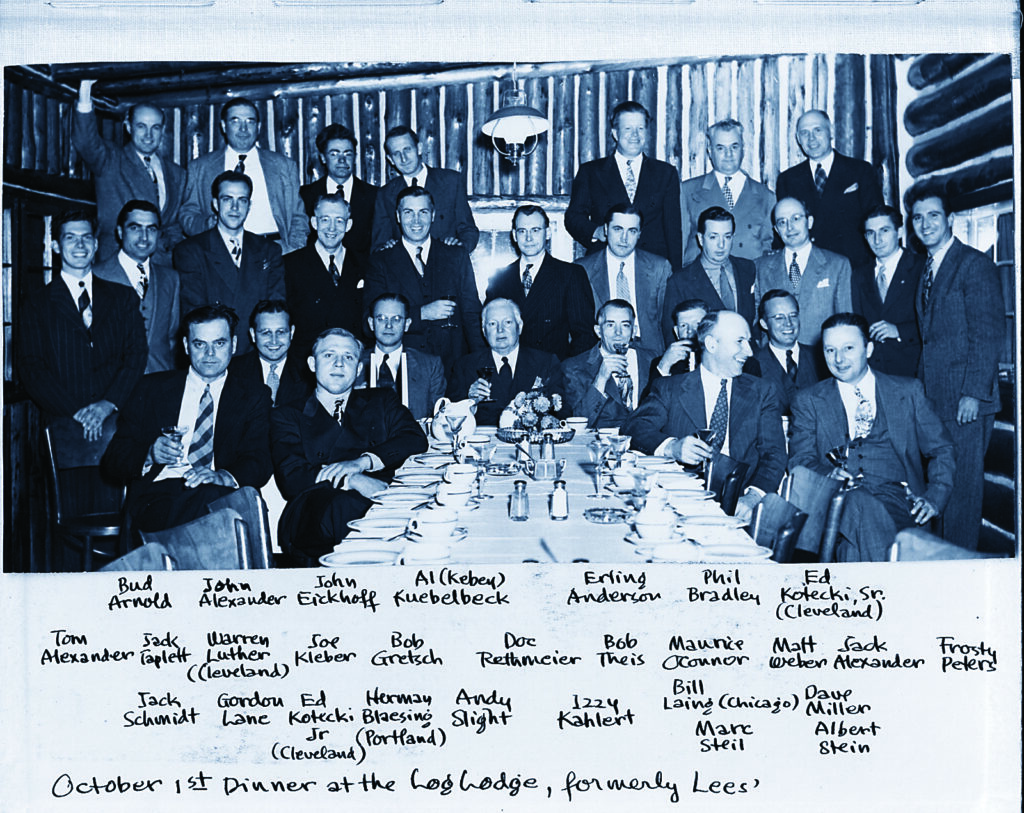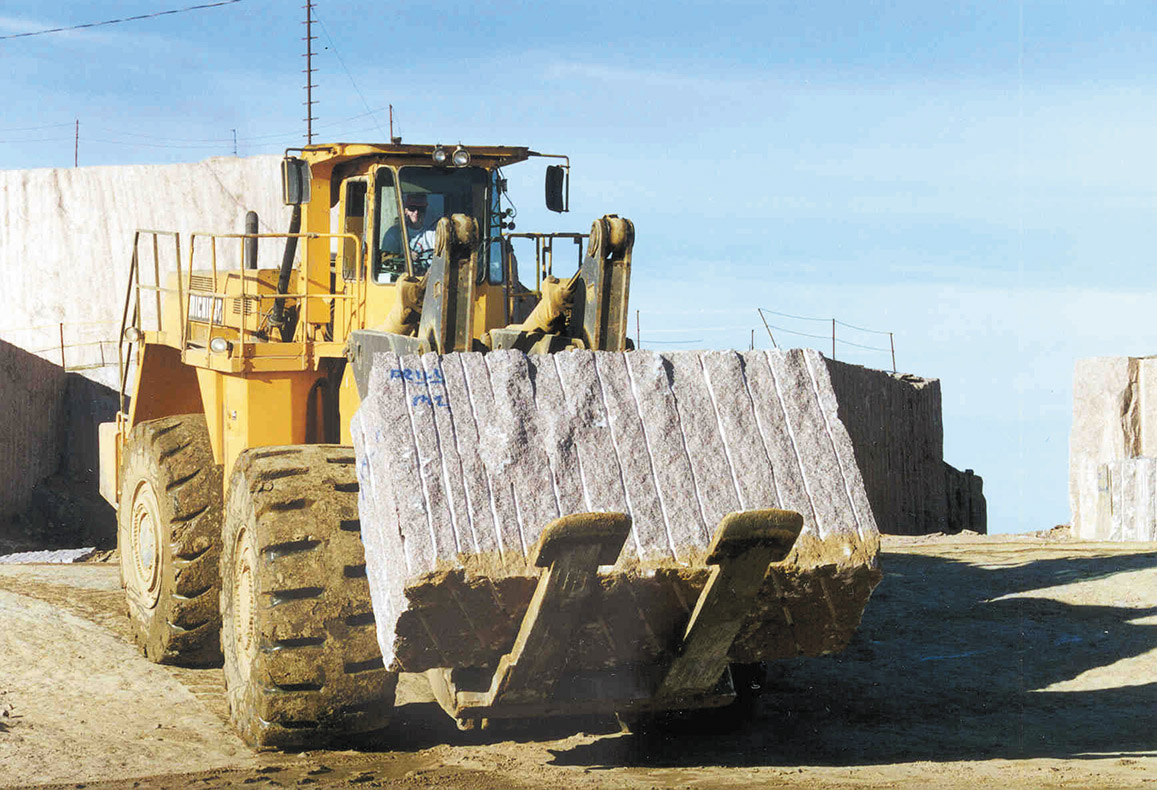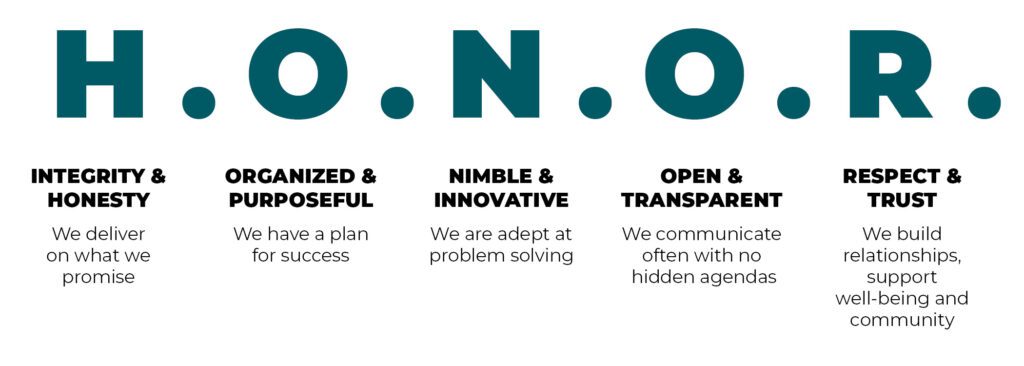It is a name most people who work in the memorial industry will instantly recognize: Coldspring. Since 1898, this company headquartered in Cold Spring, Minnesota — and formerly known as Cold Spring Granite — has remained at the forefront in the quarrying and finishing of stone for a variety of applications, including those used throughout cemeteries and memorial parks.
Coldspring’s longevity has been driven by a commitment to upholding the highest levels of quality and service while always innovating and adapting to continue delivering for customers. Over the last 125 years, the company has evolved along with changing trends, economic cycles and ongoing technology advancement.
But through it all, Coldspring has stayed true to the founding core values that continue to guide every business decision and employee action to this day.

Necessity breeds opportunity
The Coldspring memorial business we see today got its start in the late 1920s, when John Alexander, son of company founder Henry Alexander, saw potential in the variety of granite colors and finishes the company could potentially supply to memorial businesses. As the economy worsened on the heels the Great Depression, the Alexander family knew they needed to diversify their business beyond the ailing building industry. Coldspring monument and mausoleum sales were only 14 percent of total sales at the time.
In 1927, John wrote to Frank Reed, an early sales representative based in St. Louis: “I believe it would be in your best interest as well as ours to master [the memorial] market,” he wrote. “It would be a matter of calling on dealers frequently and doing estimating for them in mausoleum and monument work.”
The directive in this letter would not only help get Coldspring through the Great Depression, but it would also be key to the company’s continued growth and success for decades to come.
Why didn’t Coldspring expand its memorial business sooner? At the time, families were accustomed to seeing only gray granite monuments at cemeteries, much of which was supplied by a handful of large East Coast manufacturers. Many Coldspring leaders did not feel that the public would accept the variety of granite monument colors and finishes that Coldspring could offer.
John Alexander saw things differently. He was convinced that if families had the option between mourning a death with dull gray granite or celebrating a life with a bright, polished colored monument from Coldspring, many would choose the latter. From a business standpoint, he also saw this as the ideal opportunity to capture market share from the East Coast suppliers. He was correct on both accounts.
A new division hits full stride


John soon assembled a dedicated sales force, emphasizing to the team that customer service was to be the hallmark of the new monument division. Dave Miller and Les Hicks were chosen to oversee new product development. Both had been with the company for many years. Dave, a born innovator known within the company for his ambition, was appointed to oversee operations. Les was a gifted salesman who loved to meet and help people.
Work began in earnest for Dave and Les during the winter of 1934, when much of the company’s workforce had returned and the company began to recover financially. As Dave finalized operations, Les personally reached out to hundreds of potential accounts nationwide with proposals to sell colored, polished monuments at competitive prices. He also introduced the concept of anticipating consumer needs and placing monument orders well in advance of the expected Memorial Day rush. Customers were highly receptive to this idea, with many ordering train carloads of monuments the previous fall for the next springtime busy season.
The company was again profitable by 1935, due in large part the growing monument division. Company revenue topped $1 million in 1937 for the first time in several years. By the end of the 1930s, the Coldspring monument division was enjoying exceptional success. Throughout this period of significant growth, the team never lost sight of John’s original mandate to prioritize delivering exceptional customer service and building personal, long-term relationships.
Coldspring began holding annual conventions, with Dave and Les presenting new products, explaining sales programs, answering questions — and filling many, many orders. Sales from the 1938 convention alone kept the quarries and plant busy for months. These events had become so popular that Coldspring had to rent the local movie theater to manage the attendees.
Later in 1938, John Alexander joined Dave and Les in Chicago at a memorial convention. The three booked a suite of rooms to conduct business. The market got to know John personally through friendly conversation, followed by Les presenting the latest designs and benefits of polished colored granite. Finally, Dave discussed ordering and fulfillment, including discounts for train carload orders and getting deliveries scheduled.


The formula worked wonders, with orders flooding in all three days on the convention. The volume of new business was so overwhelming that an additional team member was sent to Chicago from Minnesota to help process all the paperwork.
More quarries, new capabilities
With the rapid increase in business volume during the late 1930s came a need to access more raw materials and upgrade operations to manage the volume. Coldspring initially opened two new quarries — one in Isle, Minnesota and a second in Mellon, Wisconsin — for a total of six. By 1938, the company was operating 10 active quarries. (Today, Coldspring owns and operates more than 30 quarries and multiple stone fabrication facilities in New York, Minnesota, South Dakota, Texas, California and Canada.)
Operational upgrades soon followed the quarry expansion. A new steel-shot plant was built for molten steel to be produced onsite and hardened into BB-like pellets for its giant saws. Bringing this capability in-house gave Coldspring more control over material costs and supply. For similar reasons, a new wheel plant was added for internally manufacturing carborundum wheels used to cut and grind granite. Administrative systems were also upgraded to keep pace with growing demands on order entry and delivery tracking.
By 1939, the foundation was in place to maintain a thriving and adaptable memorials business well into the future — much to the credit of Dave Miller, Les Hicks and John Alexander. The next major development arrived in 1953, when Coldspring opened a bronze foundry to support the rapid proliferation of memorial parks across the United States. For the first time, the GranitBronz® offering made it possible for customers to order fully assembled memorials featuring bronze and granite, saving customers assembly time and inventory space. The foundry has undergone several expansions since to keep pace with rising order volumes and new offerings.


Technology has also become an increasingly critical component of how Coldspring helps memorial business serve their clients better. Innovative tools such as the Personal Reflections® online memorial design system and MyColdspring order management portal provide a streamlined experience for families to design highly personalized memorials from scratch, monitor progress and track delivery.
Founding values alive and well today
Coldspring’s legacy of success is primarily a story about people — good, hardworking, quality-focused people who share the same core values as the company founder. These values, which includes a commitment to taking care of others and seeing everyone as extended family, allows the company to retain very loyal long-term customers.
“The Alexander family has always been grounded in faith and approaching our business and people with the humility of a servant’s heart — that we’re all in this together to help one another succeed,” said Mike O’Connor, who will soon co-lead the company alongside his wife Holly Alexander, daughter of exiting CEO Pat Alexander.
“I see firsthand how our core values come to life every day, which can be summed up by our interpretation of the word HONOR,” O’Connor continued (see sidebar). “It’s about asking the right questions: ‘Are we operating with honesty and integrity?’ ‘Are we delivering on our promises?’ ‘Are we exploring every possible angle to a challenge?’ Having such questions top of mind keeps our people engaged and our customers satisfied, which results in strong business performance.”


Terry Turrentine is managing partner at Turrentine-Jackson-Morrow, a family-owned cemetery business that has worked with Coldspring since 1966. She recently talked about the striking similarities she sees between how the two businesses treat their customers and one another.
“It takes hard work and dedication to keep a longstanding family business going, and we admire Coldspring’s commitment to community, employees, customers, quality and the legacy they have built over the last 125 years,” she said. “They are simply the best at what they do — and what they represent as a company makes them an even better fit for us.”
Excited for the future
The memorial industry continues to follow a trend toward marketplace consolidation, cremation over burial and increased technology adoption. According to O’Connor, remaining true to the company’s core values will help Coldspring continue to maintain its loyal base of customers.
“It all goes back to being innovative and nimble,” he said. “At our core, we believe if we focus on our people, lead with a servant’s heart and problem-solve as a team, we will continue to be a valued resource to our memorial customers and the families they serve for the next century and beyond.”
To learn more about Coldspring and view a timeline of the company’s rich history, please visit www.coldspringusa.com.
Featured in American Cemetery Magazine